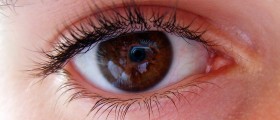
There are not that many people in the world who have either heard of or know what dacryodenitis is. First of all, people need to know a couple of things before trying to understand what it is. The supratemporal orbit is where the lacrimal gland is located. It is also important to know that two lobes exist and these are the orbital and the palpebral. It is not hard to visualize the palpebral lobe by upper lid eversion. There are not that many factors that cause the formation of the aqueous layer of the tear film and in almost all cases it occurs due to eccrine secretary gland. Experts say that dacryoadenitis is an inflammatory enlargement of the lacrimal gland. People should also know that this condition can be either acute or chronic. Its etiology can also be either infectious or systemic.
Pathophysiology
Patthophysiology of dacryoadenitis is still not fully understood, according to the experts. However, it is believed that it is the ascension of an inciting agent from the conjunctiva through the lacrimal ductules into the lacrimal gland the thing that causes infectious dacryoadentitis.
Frequency in the United States
The main reason why not so many people know about this condition is because it is does not occur that often. This is also the reason why there is not that much data about its prevalence. According to certain researches, one ophthalmic patient out of 10,000 has this condition. There is also no data on the mortality of dacryoadentitis. When it comes to race, sex and age, there are no predilections that are being noted. That means that any person can be affected with this condition, no matter his or her age, race or sex.
History
Acute and chronic dacryoadenitis are different. In case of an acute one, there is unilateral and severe pain, redness and pressure in the supratemporal region of the orbit and rapid onset is always present. On the other hand, in case of a chronic one, it can be a bilateral, painless enlargement of the lacrimal gland present for a period longer than a month. People should also know that a chronic one is more common than the acute one.
Signs
Chemosis, conjunctival injection, mucopurulent discharge, erythema of eyelids, proptosis, ocular motility restriction and swelling of the lateral third of the upper lid are some of the most common signs. Fever, malaise and parotid gland enlargement are some of the most common physical signs.
Causes
Causes can be infectious like mumps, herpes zoster and echoviruses, bacterial like neisseria gonorrhoeae, Chlamydia trachomatis and borrelia burgdorferi and fungal like parasite, protozoa and histoplasmosis. However, fungal causes are quite rare.
The treatment will be determined by the onset and etiology but people should know that it can be viral, bacterial and inflammatory.

















Your thoughts on this
Loading...